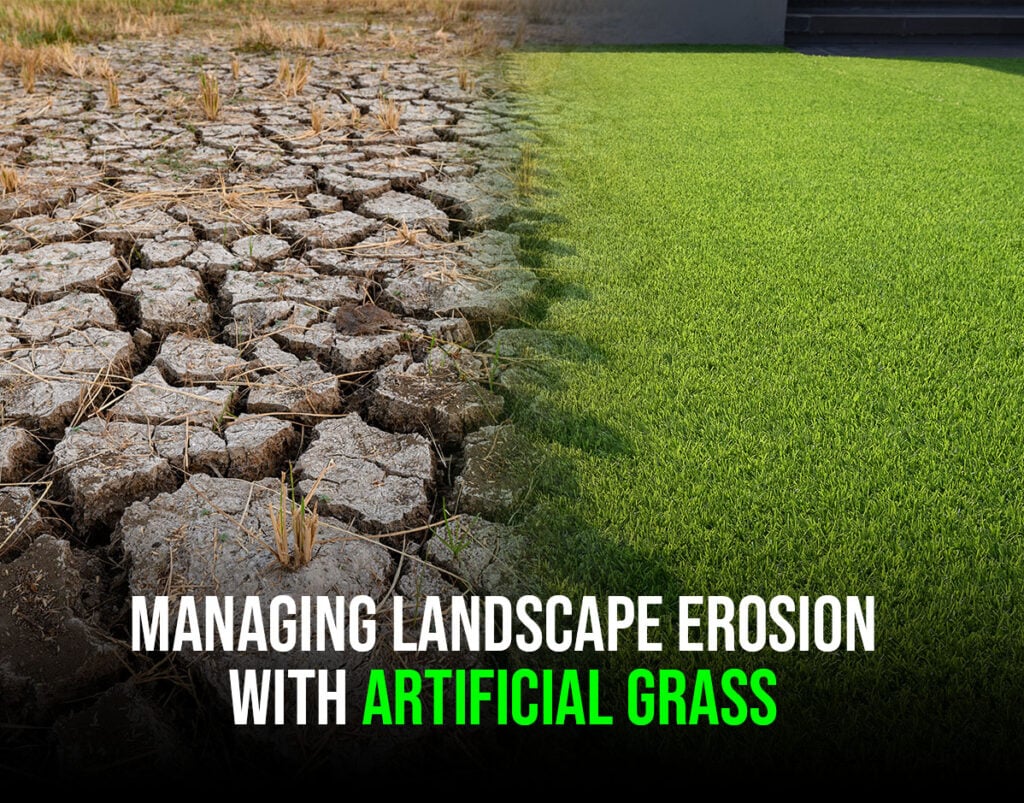Soil Erosion and Artificial Grass in Portland Oregon

Soil erosion is a major issue for some Portland homeowners. This natural process occurs when soil particles are detached and transported away by wind or water. While some erosion is normal, excessive amounts can completely damage landscapes.
As rainwater moves across your yard, it picks up loose topsoil. Over time, this causes depressions, gulleys, and bare patches. Concentrated water flow carves out deep ruts. Erosion also removes valuable nutrients and organic matter from soil.
Wind gusts sweep away vulnerable topsoil and blow it beyond property lines. Dust storms visibly demonstrate erosive power.
The consequences of uncontrolled erosion include:
- Loss of fertile topsoil needed for plant growth
- Root exposure making plants unstable
- Development of deeper channels that encourage more water flow
- Drainage and flooding problems from changes in landscape contours
- Foundation damage as support soils wash away
- Negative impacts on local waterways from sedimentation
Traditional erosion control methods like silt fencing, straw cover, and retaining walls have limitations. A highly effective solution is installing artificial grass.
How Artificial Turf Prevents Erosion in Portland Landscapes
Artificial grass provides superior erosion control for two main reasons:
- It’s Not Subject to Removal by Water or Wind
Unlike real grass and other landscaping materials, artificial turf cannot be detached and transported by moving water or wind. Materials like topsoil, mulch, and gravel can wash or blow away. Real grass erodes once its roots loosen.
In contrast, artificial grass is securely anchored to the ground and has no exposed soil. Its blade structure is durable and designed to handle all types of weather. Portland rainfall cannot displace synthetic fibers like it does soil.
Powerful winds also won’t blow away fake grass. While gusts destroy plant roots and send unsecured objects flying, properly installed artificial lawns stay fixed in place.
- It Allows Maximum Drainage
Artificial grass installations include layers of permeable materials that prevent surface runoff.
It starts with a porous backing that allows drainage through the fake grass blades. A percolation layer of gravel goes beneath that.
At the base is a compacted porous subgrade that accommodates water flow. Some systems also use perforated pipes surrounded by gravel to direct drainage away from the site.
Together, these elements maximize vertical water drainage through the synthetic turf. This keeps erosion-causing surface runoff to a minimum.
Proper Installation Maximizes Erosion Protection
To get the full erosion control benefits from artificial grass, proper installation is crucial. Here are key steps our experts follow:
- Analyzing drainage patterns and soil conditions
- Grading surfaces to direct runoff away from vulnerable areas
- Compacting porous subgrade materials for stability
- Adding drainage pipes and gravel as needed
- Selecting a durable artificial grass designed for high drainage
- Seaming turf sections to avoid lifted edges that collect debris
- Properly anchoring turf across the entire landscape
Learn More About Artificial Grass
To discuss how synthetic turf can improve your property, contact Portland Artificial Grass today for a free quote at 408-317-0931. Our team serves homeowners throughout the Portland metro area.
